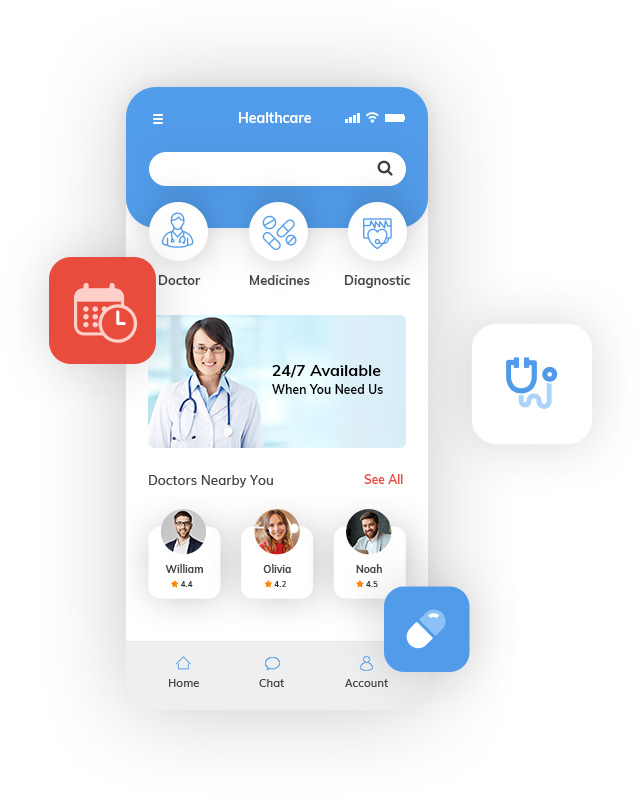-
Products
- Services
Development
- Custom eCommerce Development
- B2B eCommerce
- Mobile application development
- Enterprise App Development
- Agile software development
- Agile eCommerce Development packages
- MVP development
- Laravel development
- CMS development
- Node.js development
- React.js development
- Hire dedicated developers
Design
Growth
Consultancy
- Work
- Insights
- FATbit
Importance of Apps in Health and Fitness
Health and fitness apps have many uses for athletes, patients, and healthcare service providers. Understand the benefits for each user type.
Athletes
Fitness enthusiasts can avail benefits such as attend fitness classes, sign up for sports coaching, get health & fitness tips, gain information on food ingredients, & more.
Patients
Through apps, patients can schedule an appointment with qualified medical professionals, get daily reminders of medication, monitor their daily nutrient intake, and more.
Providers
Through an app, healthcare providers can lower the readmission rates, reduce visits for patients who require follow-ups, provide certain services entirely online, & more.
Leverage An Ecosystem of Frameworks & APIs
Embrace the capabilities to make your mobile app offer a human-friendly user interface and seamless behavior across devices.
By integrating the Apple HealthKit framework in a health and fitness mobile app, different features can be added. The Apple HealthKit framework can collect, store, analyze, and visualize health and fitness data. Apple HealthKit uses user's permission to store such data on different devices such as iPhone and Apple Watch.
The architecture and design of the Apple HealthKit framework enable meaningful social interactions across devices. To truly work across devices securely, the Apple HealthKit can easily be used in a multithreaded environment and the user-generated data is kept locally in encrypted form when the device is locked.
Google embraces an open ecosystem with its Google Fit SDK. It enable partners and developers to create human-centered mobile apps. By leveraging the SDK, mobile apps can store data from most wearable devices as well as sensors. Google Fit SDK can be leveraged by major platforms such as iOS as well as web apps.
Google Fit comes with different APIs. Some applications of APIs include reading data from sensors, recording fitness sports activities like running or bike riding, managing fitness data, monitoring time intervals of fitness sessions, track goals, connect using low energy Bluetooth, leverage custom data types, and more.
Using Apple HealthKit and Google Fit, one can add many features in the health and fitness mobile app. For example, a patient can keep track of blood pressure, sugar level, allergies, and more. Using such mobile apps, women can keep track of parameters like menstrual flow, ovulation, and more.
More features can be added to a mobile app using APIs. Few such APIs include FatSecret Platform API, Can I Eat it? and more. These APIs add value in the mobile app and enables the user to fetch nutritional information by scanning the barcode using the back camera of the smartphone, monitor nutritional intake, and more.
Add Value For Patients Through Healthcare App
Mobile apps can have several benefits for patients who require critical care, doctors with busy schedules, patients who depend on timely medication, and more.

- Schedule an appointment with a doctor and pay online
- Analyze the patterns from patient-generated health data
- Get directions to the nearest health and wellness facility
- Synchronize data with providers using smart wearables
- Fetch data and view stats from lab test reports
Promote General Wellness through Fitness App
Fitness apps can address many pain points for athletes as well as patients with a specific condition. Such apps support different models and features.

- Get nutritional information by scanning the barcode
- Track progress made while doing fitness exercises
- Get directions to the nearest health and wellness facility
- Monitor heart rate, calories burned, and more, using an app
- Follow a strict diet plan to achieve a superior fitness level
- Book a slot with a fitness trainer and get online training